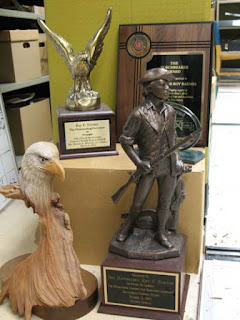 The Keith Mason Papers are now open for research at the Russell Library.
The Keith Mason Papers are now open for research at the Russell Library.Keith Mason was born in Snellville, Georgia on 20 September 1960. His father, Wayne Mason, was former Chairman of the Gwinnett County Commission and introduced his son to Zell Miller, who was running for Lieutenant Governor in 1974. As a teenager, Mason accompanied Zell and Shirley Miller on several campaigning trips and Miller was impressed with the Mason’s knowledge of state issues and current proposed legislation.
After graduating high school in 1978, Mason coordinated Miller’s re-election campaign in East Georgia’s tenth congressional district. He entered the University of Georgia in the fall and studied finance. He became active in the Phi Gamma Delta fraternity as an undergraduate and remained in Athens to attend law school at the university, graduating in 1985. During college and law school, he served as chairman of United States Senator Sam Nunn’s youth organization, and worked on Nunn’s senate campaigns in 1978 and 1984. Mason served as a legislative aid for Lieutenant Governor Miller, as an assistant in 1980, and worked on both Miller’s 1982 and 1986 re-election campaigns.
In 1988, Mason worked for Miller as a fundraiser for his 1990 gubernatorial campaign and then became the campaign manager for Miller’s successful run against Andrew Young in the Democratic primary and Johnny Isakson in the general election. Mason was appointed Miller’s Executive Secretary and was responsible for advising the governor on legislation and overall strategy.
In July 1993, Mason left the Miller Administration to work in the White House as Deputy Director of Intergovernmental Affairs. In the Clinton administration, Mason worked to foster good working relationships between the president and U.S. governors. He alerted governors of legislation important to their states, smoothed over differences, and streamlined bureaucracy. In December 1995, Mason resigned and returned to Atlanta, Georgia.
Currently, Mason lives in Atlanta with his wife, Delphine, and their children. He is employed as an attorney by McKenna Long and Aldridge LLP and serves as a public policy counselor. Mason is also the CEO of Mason Capital, a real estate and investment firm, and is widely considered one of the most influential lawyers in Georgia.
More about the collection
This collection consists of manuscripts, printed materials, photographs, and political ephemera collected outside of Mason's work with Zell Miller (see Zell Miller Papers, Keith Mason Files). In includes papers from his tenure as White House Deputy Director of Intergovernmental Affairs, an office that acts as liaison between the president and the United States governors.
The Russell Library is open for research from 8:30 am – 4:30 pm, Monday through Friday. For further information on the Keith Mason Papers, please contact russlib@uga.edu or call (706) 542-5788.




















